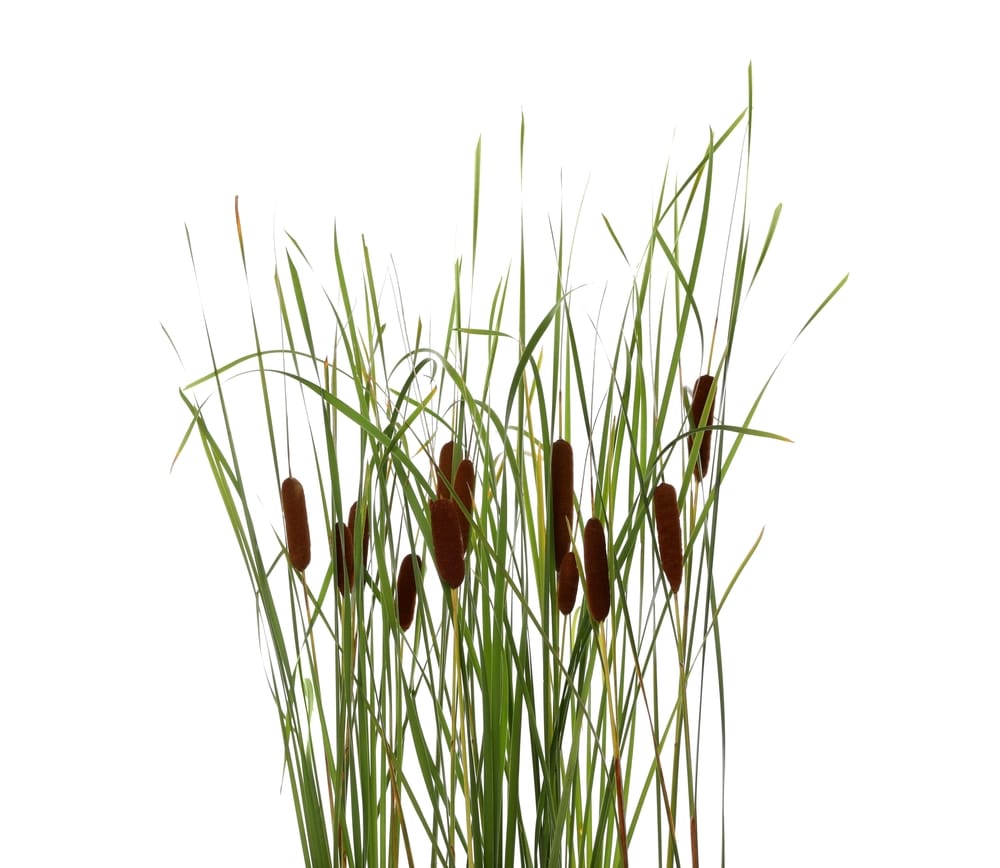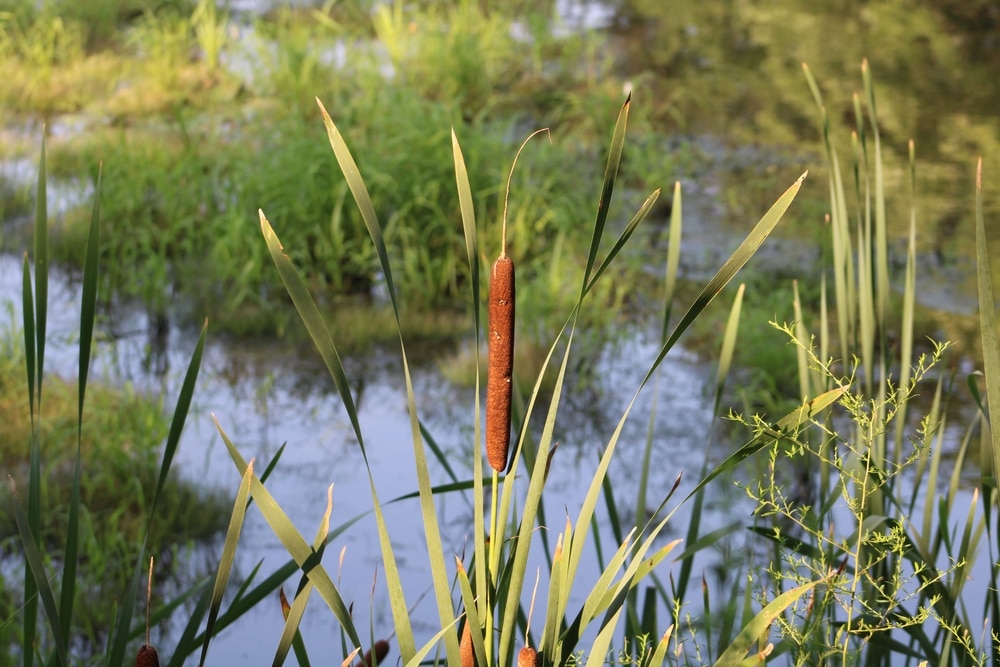If you’re walking by a pond or swampy area, you might notice tall plants boasting what appear to be ready-to-eat corn dogs. That “corn dog” almost always belongs to the cattail family. And believe it or not, it’s edible, with some people using it as a meat substitute.
Around 30 species of cattails exist in the world, and three are native to North America. We’ll explore some of the most common cattails and one outlier plant you can encounter in different parts of the world.
Common Cattail
You can find cattails in nearly every inch of the globe where standing water isn’t deeper than 2.5 feet. Although these cattails prefer freshwater, you can sometimes encounter them growing in brackish water.
Grabbing the “corn dog” portion of a common cattail is fun because it releases fluffy seeds resembling cotton. Although it isn’t common, you can boil these flower spikes while they’re immature and eat them like corn on the cob.
Southern Cattails
Southern cattails are hardier than common cattails, given that they grow in deeper water and can tolerate higher water salinity. For this reason, it’s common to encounter these “corn dog” cattails in the Florida Everglades.
The southern cattail is a fast-growing plant, and many locals find its prevalence around marshes a nuisance. The southern cattail is unique because it has flowers with males at the top and females growing up to four inches below them.
Narrowleaf Cattail
If you encounter a corn dog-looking plant in the wild that doesn’t look as beefy as you usually like your corn dogs, it’s likely a narrowleaf cattail. These cattails’ “corn dogs” grow up to eight inches long, but they remain only a half-inch across at their largest size.
Narrowleaf cattails have an excellent tolerance for moving water, particularly that which carries silt and debris. Each stalk has at least four leaves, ranging from green to light green in color. As with the other cattails on this list, you can eat several parts of this plant, including its flower spikes.
Dwarf Cattail
Dwarf cattails are the smallest type of cattail within the Typha genus. Their “corn dogs” only grow to two inches long, making them resemble what remains of the last bite of this food.
The male and female blossoms are distinct on dwarf cattails. Males have tiny flowers that are a rich yellow color. In contrast, female blossoms start as a green color and change to a deep shade of brown. The long, narrow hairs on their seeds help them transport through wind and water.
Shuttleworthii Cattail
Typha shuttleworthii is a type of cattail native to Iran, Turkey, and Europe. Initially, biologists classified shuttleworthii with the common cattail. However, they have since discovered enough distinctions between the two plants to consider them separate species.
But don’t worry—shuttleworthii still has the corn dog flower spikes. However, they have smaller seeds and narrower leaves than the common cattail. You’ll also notice that they have shorter anthers if you have a background in botany.
Graceful Cattail
Graceful cattails are medium-sized plants that produce medium-sized “corn dog” flower spikes. They have slimmer features all around, including their stems, leaves, and flower heads. For this reason, they’re a popular choice for flower arrangements.
You can find many land and aquatic creatures making graceful cattails their home. Beavers and crayfish appreciate the shelter that these densely packed plants offer. All the brown “corn dogs” you see on this plant come from female flowers.
Bulrush
Many well-meaning people mistake bulrush for cattails, even though it lacks the perfect corn dog-like flower spikes. These plants belong to the sedge family and live in strictly temperate areas of the northern hemisphere.
Bulrush serves many purposes, including helping to purify the water where it grows. Its stalks also have excellent fibrous tissue for weaving. In addition, it has foliage almost identical to cattails and brown flowers atop its stems, making it easy to mistake it for small corn dogs from afar.
The Corn Dog Plant
Seeing the corn dog-looking shoots on a cattail plant is fun for kids and adults alike. So, now you’ll know what you’re looking at the next time you’re on a hike.

